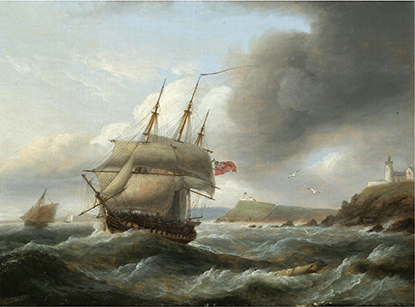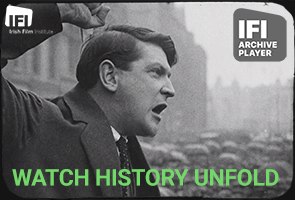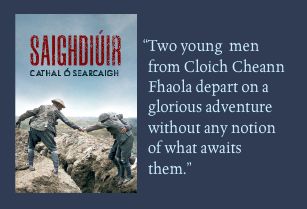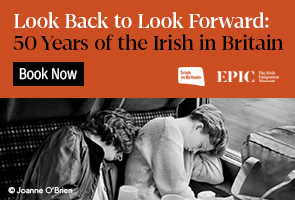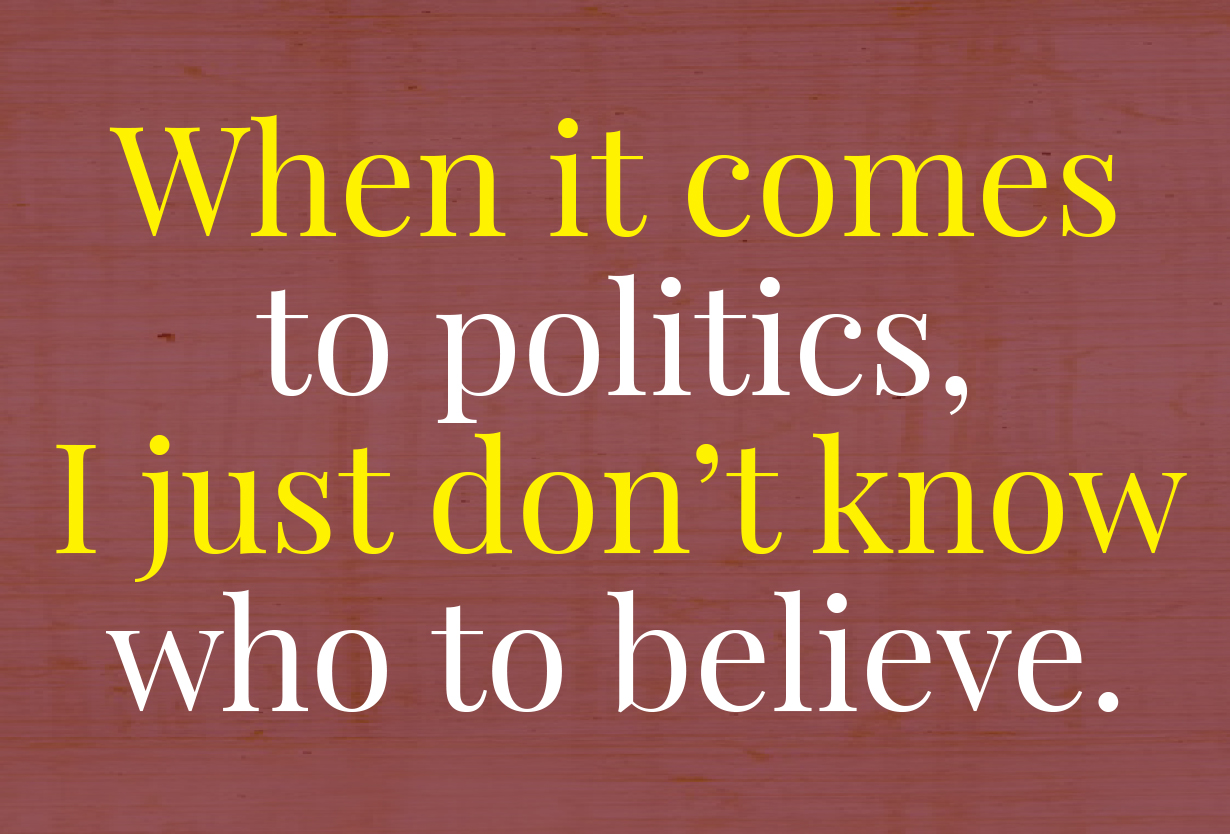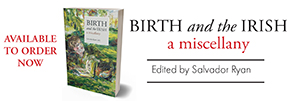If you would like to take out a subscription to the magazine, you can do that by clicking here
Columba or Colmcille was born 1500 years ago in Gartan, Co. Donegal, and claimed descent from the legendary High King of Ireland, Niall of the Nine Hostages. He entered the church, became a missionary evangelist, and is credited with spreading Christianity to Scotland. In particular, he founded the abbey on Iona, which became the dominant religious and political institution in the region for centuries. He died there, aged 75, in 597. But what do we know about Columba the man? How much of what we know is based on subsequent myth and legend? And how has he been remembered over the centuries? To address these and related questions listen to History Ireland editor, Tommy Graham, in conversation with Revd. David Houlton, Brian Lacey, and Helen Meehan.
The Hedge School series of podcasts is produced by History Ireland and the Wordwell Group. For more information or to subscribe, visit historyireland.com
This Hedge School is part-funded by Donegal County Council as part of the implementation of the County Donegal Heritage Plan
While there were optimistic hopes that the First World War or ‘Great War’ would be ‘the war to end all wars’, post-1918 Europe, including Ireland, instead experienced a ‘Greater War’—a series of civil, border and ethnic conflicts—that lasted at least until 1923. How did Ireland fit into that paradigm? Was it typical or atypical of the period? Join History Ireland editor, Tommy Graham, in discussion with Niamh Gallagher, Robert Gerwarth, John Horne, and Bill Kissane.
The Hedge School series of podcasts is produced by History Ireland and the Wordwell Group. For more information or to subscribe, visit historyireland.com
This podcast is supported by the Department of Tourism, Culture, Arts, Gaeltacht, Sport and Media under the Decade of Centenaries 2012-2023 Initiative.
One of the unsung successes of the 1998 Good Friday Agreement was the establishment of the all-island body, Waterways Ireland, with responsibility for canals and waterways. But what drove the construction of the former in the first place? How important were they to the Irish economy at their height? How and why did they decline? And what are the prospects for their renaissance under the new dispensation? To address these and related questions join History Ireland editor, Tommy Graham, in discussion with Eugene Coyle, David Dickson, Nuala Reilly and Alexander Ó Fháilghigh.
The Hedge School series of podcasts is produced by History Ireland and the Wordwell Group. For more information or to subscribe, visit historyireland.com
This Hedge School is supported by the Department of Foreign Affairs’ Reconciliation Fund.
Dáil Éireann sought not only to take back the political control lost in the 1800 Act of Union, but also the fiscal and monetary powers lost with the merger of the Irish and British exchequers in 1817. It also established a parallel legal system, the ‘Dáil Courts’, and, especially after the local elections of 1920, sought to control local government. To assess the success of these efforts join History Ireland editor, Tommy Graham, in discussion with John Borgonovo, Caoimhe Nic Dháibhéid, Patrick O’Sullivan Greene, and Brian Hughes.
The Hedge School series of podcasts is produced by History Ireland and the Wordwell Group. For more information or to subscribe, visit historyireland.com
This podcast is supported by the Department of Tourism, Culture, Arts, Gaeltacht, Sport and Media under the Decade of Centenaries 2012-2023 Initiative.
On 9 September 1921 over fifty IRA prisoners staged a break-out—one of several during the War of Independence—from Rath internment camp in the Curragh, Co. Kildare. To mark its centenary, and to discuss the wider significance of prisons and prisoners in the revolutionary period, join History Ireland editor, Tommy Graham, in discussion with James Durney, Mary McAuliffe, William Murphy, and Liam J. Ó Duibhir.
The Hedge School series of podcasts is produced by History Ireland and the Wordwell Group.
For more information or to subscribe, visit historyireland.com
This podcast is supported by Kildare County Council’s Decade of Commemorations Programme and the Department of Tourism, Culture, Arts, Gaeltacht, Sport and Media under the Decade of Centenaries 2012-2023 Initiative.
Listen to author Colum Kenny in conversation with History Ireland editor, Tommy Graham, as he discusses the story of a remarkable man’s efforts to help starving people during the Irish Great Famine. He reveals their terrible experiences inside and outside one of the national ‘workhouses’ and throws new light on the relationship between class, religion and poverty in Ireland before independence. John O’Sullivan (1807–1874) was an independent-minded priest who clashed with bishops and landlords. He kept journals that have not been published. The author mines these and other sources, including eyewitness accounts, UK archives and Kerry’s workhouse minutes, for new insights into aspects of Irish society, including politics, proselytism and the status of women.
Dr Colum Kenny BL is Professor Emeritus, Dublin City University, a journalist and an honorary bencher of King’s Inns. Awarded the Irish Legal History Society’s Gold Medal, his books include histories of King’s Inns, an account of Irish emigration to the USA and, most recently, a biography of Arthur Griffith.
Kenmare: History and survival—Fr John O’Sullivan and the Famine Poor Is available from all good bookshops and online from wordwellbooks.com
The Hedge School series of podcasts is produced by History Ireland and the Wordwell Group.
For more information or to subscribe, visit historyireland.com
To what extent did the military tactics of Thomas Ashe’s (5th) Fingal battalion of the Irish Volunteers in 1916 prefigure those of the IRA in the War of Independence, 1919-21? To what extent did the sack of Balbriggan in September 1920 provide the template for subsequent reprisals by Crown force? To discuss the role of Fingal (North County Dublin) in the revolutionary decade join History Ireland editor, Tommy Graham, in discussion with John Dorney, Marie Bashford Synnott, and Frank Whearity.
The Hedge School series of podcasts is produced by History Ireland and the Wordwell Group. For more information or to subscribe, visit historyireland.com
This Hedge School is supported by Fingal County Council and the Creative Ireland Programme 2017–2022.
According to British Prime Minister David Lloyd George Irish nationalists were ‘natural propagandists’. How accurate was this description? How did they breach what Arthur Griffith called the ‘paper wall’ of British news coverage? How important was the new medium of film? And what was the role of women as both the disseminators and objects of propaganda? To address these and other questions tune in to History Ireland editor, Tommy Graham, in discussion with Ciara Chambers, Darragh Gannon, Maurice Walsh and Margaret Ward.
The Hedge School series of podcasts is produced by History Ireland and the Wordwell Group. For more information or to subscribe, visit historyireland.com
This podcast is supported by the Department of Tourism, Culture, Arts, Gaeltacht, Sport and Media under the Decade of Centenaries 2012–2023 Initiative.
Author Bryan MacMahon in conversation with Tommy Graham (editor, History Ireland)
In West Kerry between 1825-45, the work of Protestant evangelicals was widely hailed as a model of a successful missionary campaign; however, it evoked a furious response from Catholic priests. The war of words between clergymen of both persuasions was fomented by rival local newspapers, reaching a climax in a notorious libel case in March 1845.
Listen to author and historian Bryan MacMahon in conversation with History Ireland editor, Tommy Graham, as he discusses the origins and progress of the campaign and the backlash during these years, in particular, how the Church of Ireland missionaries were motivated by a desire to save Irish-speaking Catholics from what they saw as superstitious practices and enthralment to Rome.
Bryan MacMahon is an author and historian whose previous books include The Great Famine in Tralee and North Kerry (2017) and Ascend or Die: Richard Crosbie, Pioneer of Balloon Flight (2010). He has contributed to a range of historical journals, including History Ireland, Dublin Historical Record and The Irish Sword.
Faith and Fury: the evangelical campaign in Dingle and West Kerry 1825–45
Is available from all good bookshops and online from wordwellbooks.com
https://wordwellbooks.com/index.php?route=product/product&product_id=1978
The Hedge School series of podcasts is produced by History Ireland and the Wordwell Group. For more information or to subscribe, visit historyireland.com
Kilkenny was described by Ernie O’Malley as ‘slack’ during the War of Independence. Was this really the case? Kilkenny has a notable revolutionary history—as crucible of the Tithe War (1830s), birthplace of one the founders of the IRB, James Stephens (1858), and a rebel turnout, albeit small (1916). Also, the attack and capture of Hugginstowm RIC barracks by the IRA in March 1920 was one of the earliest of such attacks in the country, and the county was to the fore in the ‘counter state’, with particularly active Dáil Courts. To address the question of Kilkenny’s role in the revolutionary decade, including the role of women, listen to History Ireland editor, Tommy Graham, in discussion with Mary McAuliffe, Orla Murphy and Eoin Walsh.
The Hedge School series of podcasts is produced by History Ireland and the Wordwell Group. For more information or to subscribe, visit historyireland.com
This Hedge School is commissioned by Kilkenny County Council and funded by the Department of Tourism, Culture, Arts, Gaeltacht, Sport and Media under the Decade of Centenaries 2012-2023 initiative.
A century ago, at noon on 11 July 1921, a truce came into effect in the Anglo-Irish war between the IRA and Crown forces. Why did it happen then—and why had peace feelers in late 1920 failed? What motivated each side to sue for peace? What were their expectations? To address these and other questions tune in to History Ireland editor, Tommy Graham, in discussion with John Dorney, David McCullagh, Eve Morrison and Padraig Óg Ó Ruairc.
The Hedge School series of podcasts is produced by History Ireland and the Wordwell Group. For more information or to subscribe, visit historyireland.com
This podcast is supported by the Department of Tourism, Culture, Arts, Gaeltacht, Sport and Media under the Decade of Centenaries 2012–2023 Initiative.
On 22 June 1921 King George V officially opened the Northern Ireland parliament, thus confirming the existence of Northern Ireland as set out in the 1920 Government of Ireland Act. Moreover, since the formation of the Ulster Special Constabulary in autumn 1920 it also had the means to defend itself. To discuss these and related matters tune in to History Ireland editor, Tommy Graham, in discussion with Elaine Callinan, Seán B. Newman, Mike Rast and Brian Walker.
This Hedge School is supported by the Department of Tourism, Culture, Arts, Gaeltacht, Sport and Media under the Decade of Centenaries 2012-2023 initiative.
Despite a notable revolutionary pedigree—scene of a French invasion in support of the 1798 Rebellion and cradle of the Land League in 1879—Mayo was a ‘slow starter’ in the War of Independence, with major IRA engagements with Crown forces only starting in the spring of 1921. It was also the scene of major agrarian unrest.
Listen to History Ireland editor, Tommy Graham, in discussion with James Laffey, Sinéad MacCoole, Cormac O’Malley and Dominic Price.
The Hedge School series of podcasts is produced by History Ireland and the Wordwell Group. For more information or to subscribe, visit historyireland.com
This Hedge School is supported by The Department of Tourism, Culture, Arts, Gaeltacht, Sport and Media and Mayo County Library
Author David Dickson in conversation with Tommy Graham (editor, History Ireland)
The untold story of a group of Irish cities and their remarkable development before the age of industrialization. A backward corner of Europe in 1600, Ireland was transformed during the following centuries. This was most evident in the rise of its cities, notably Dublin and Cork. David Dickson explores ten urban centers and their patterns of physical, social, and cultural evolution, relating this to the legacies of a violent past, and he reflects on their subsequent partial eclipse.
The First Irish Cities: an eighteenth-century transformation is published by Yale University Press.
Further information: https://www.yalebooks.co.uk/display.asp?K=9780300229462
The Hedge School series of podcasts is produced by History Ireland and the Wordwell Group. For more information or to subscribe, visit historyireland.com
On 25 May 1921, Dublin’s Custom House, headquarters of the Local Government Board of Ireland, was occupied and then burnt in an operation involving over 100 IRA volunteers. It has long been regarded as a propaganda coup but a military disaster for the IRA. But are either of these assumptions correct? Did it disrupt British administration? Did it disable Dublin’s IRA subsequently? What does it tell us about how the IRA conducted operations in an urban environment?
Listen to History Ireland editor, Tommy Graham in discussion with Joe Connell, John Dorney, Liz Gillis and Bill Kautt.This Hedge School is supported by the Department of Tourism, Culture, Arts, Gaeltacht, Sport and Media under the Decade of Centenaries 2012-2023 initiative
Today James Gandon’s neoclassical masterpiece is one of the most recognizable and well-regarded buildings in Dublin. Its completion in 1791 marked yet another instalment in the movement of the axis of the Georgian city eastwards. Yet over the ten years of its construction it was regarded as a ‘white elephant’, built in what was then a swamp, with substantial cost overruns—even provoking the ire of the Dublin ‘mob’. Why was it so controversial and what was its effect on the long-term planning of the city? Join History Ireland editor, Tommy Graham, in discussion with Christine Casey, David Dickson, James Kelly and Sylvie Kleinman.
This podcast is supported by the Department of Housing, Local Government and Heritage.
While not in the vanguard of armed activity during the War of Independence, Wexford has the distinction of being one of the few counties outside Dublin that saw action during the 1916 Rising. On the other hand it was also one of the few places where John Redmond’s (a native of the county) Irish Parliamentary Party maintained a substantial level of support throughout the revolutionary period. To interrogate these apparent contradictions listen to History Ireland editor, Tommy Graham, in discussion with Bernard Browne, Ida Milne, William Murphy and Kevin Whelan.
This podcast is supported by Wexford County Council Public Library Service and the Department of Tourism, Culture, Arts, Gaeltacht, Sport and Media under the Decade of Centenaries 2012-2023 initiative.
While the constitutional outcomes of the revolutionary period have evolved over time, one has remained constant over the past century—partition. While a previous Hedge School in December 2020 examined how that came about in 1920/21, this discussion will focus on its effects over the following century, up to and including the uncertainly caused by Brexit and growing calls for a border poll on Irish unity. Tune in to History Ireland editor, Tommy Graham, in discussion with Paul Bew, Brian Hanley, Martin Mansergh, and Margaret O’Callaghan.
The Hedge School series of podcasts is produced by History Ireland and the Wordwell Group. For more information or to subscribe, visit historyireland.com
This podcast is supported by the National Library of Ireland.
At Crossbarry, Co. Cork, on 19 March 1921 over 100 IRA volunteers, under the command of Tom Barry, were almost surrounded by a combined force of regular British Army and Auxiliaries of at least ten times that number. What happened? What were its consequences? And what does it tell us about the conduct of the War of Independence generally? Listen to History Ireland editor, Tommy Graham in discussion with John Borgonovo, Bill Kautt, Eve Morrison and Gerry White.
The Hedge School series of podcasts is produced by History Ireland and the Wordwell Group. For more information or to subscribe, visit historyireland.com
This podcast is supported by the Department of Tourism, Culture, Arts, Gaeltacht, Sport and Media under the Decade of Centenaries 2012-2023 Initiative.
Despite its apparent geographical isolation, with the Atlantic Ocean to the west and north, and the River Shannon to the south and east, County Clare has been centre stage in Irish political life, from the election of Daniel O’Connell in 1828, to the equally ground-breaking election of Eamon de Valera in 1917, and was one of the most active counties in the War of Independence. Join History Ireland editor, Tommy Graham, for a discussion on the ‘revolutionary decade’, with Cecile Gordan, Tomás Mac Conmara, Padraig Óg Ó Ruairc, and Joe Power.
This Hedge School is supported by Clare County Council and the Department of Tourism, Culture, Arts, Gaeltacht, Sport and Media under the Community Strand of the Decade of Centenaries programme.
On the night of the 6/7 March 1921, the Mayor of Limerick, George Clancy, his predecessor, Michael O’Callaghan, and IRA Volunteer Joseph O’Donoghue, were shot dead by an Auxiliary death squad lead by Maj. George Montagu Nathan. How did these killings fit into the wider story of Limerick during the revolutionary decade? Tune in to History Ireland editor, Tommy Graham, in conversation with Brian Hanley, Helen Litton, John O’Callaghan and Tom Toomey.
The Hedge School series of podcasts is produced by History Ireland and the Wordwell Group. For more information or to subscribe, visit historyireland.com
This podcast is supported by the Department of Tourism, Culture, Arts, Gaeltacht, Sport and Media under the Decade of Centenaries 2012–2023 Initiative.
Author Katharine Simms in conversation with Hiram Morgan (UCC)
Gaelic Ulster was once a vigorous, confident society, whose members fought and feasted, sang and prayed. It maintained schools of poets, physicians, historians and lawyers, whose studies were conducted largely in their own Gaelic language, rather than in the dead Latin of medieval schools elsewhere in Europe. This monumental book explores the neglected history of Gaelic Ulster between the eleventh and early sixteenth centuries, and sheds further light on its unique society.
Gaelic Ulster in the Middle Ages: history, culture and society is published by Four Courts Press, Dublin.
www.historyireland.com/podcast-channel/ and
https://podcasts.apple.com/us/podcast/history-ireland/id1503109266
or wherever you get your podcasts.
No other woman who never set foot on the island—with the possible exception of Queen Elizabeth I—has had a greater effect on the history of Ireland. But who was Katharine O’Shea (née Wood)? And what if she and Charles Stewart Parnell never met? Listen to History Ireland editor, Tommy Graham, discuss this contrafactual with Mary Kenny, Patrick Maume, Daniel Mulhall, and Margaret O’Callaghan.
This podcast is supported by the Department of Tourism, Culture, Arts, Gaeltacht, Sport and Media under the Decade of Centenaries 2012-2023 Initiative.
‘Spies and informers beware!’—intelligence and counterintelligence in the War of Independence
One of the most important—and controversial—aspects of the War of Independence was the ‘intelligence war’. Given the role of spies and informers in defeating previous insurrections, it is not surprising that Michael Collins, the IRA’s Director of Intelligence, was keen to insure that history did not repeat itself. How successful was he? To shed light on this ‘shadow war’ listen to History Ireland editor, Tommy Graham, in discussion with Andy Bielenberg, Cécile Gordon, Eunan O’Halpin and Gerry White.
This podcast is supported by the Department of Tourism, Culture, Arts, Gaeltacht, Sport and Media under the Decade of Centenaries 2012-2023 Initiative.
While not in the vanguard of armed activity during the War of Independence, Kildare was central to the ‘revolutionary decade’ as whole, not only for its strategic importance and proximity to Dublin but in particular as the site of the largest British military establishment at the Curragh and elsewhere. It also has the dubious distinction of being the county worst affected by the flu pandemic of 1918-19. Listen to History Ireland editor, Tommy Graham, in discussion with James Durney, John Gibney, Ida Milne and Fionnuala Walsh.
This podcast is supported by Kildare County Council’s Decade of Commemorations Programme and the Department of Tourism, Culture, Arts, Gaeltacht, Sport and Media under the Decade of Centenaries 2012-2023 Initiative.
While not in the vanguard of armed activity in the revolutionary decade, Wicklow was, nevertheless, active in other respects. Moreover, its unique characteristics—proximity to Dublin, pioneering development of tourism, and one of the highest Protestant populations outside Ulster—make it worthy of study. Join History Ireland editor, Tommy Graham in discussion with Sheila Clarke (Ashford), Brendan Flynn (Wicklow), Kevin Lee (Carnew), Jim Rees (Arklow), Padraig Óg Ó Ruairc (author of several books on the Irish revolution).
Supported by the Commemorations Unit of the Department of Tourism, Culture, Arts, Gaeltacht, Sport and Media and Wicklow County Council’s Archives Service.
While not in the vanguard of armed activity in the revolutionary decade, Wicklow was, nevertheless, active in other respects. Moreover, its unique characteristics—proximity to Dublin, pioneering development of tourism, and one of the highest Protestant populations outside Ulster—make it worthy of study. Listen to History Ireland editor, Tommy Graham in discussion with Rosemary Raughter (Greystones), James Scannell (Bray), Brian White (Enniskerry) and John Dorney (editor of ‘The Irish Story’).
Supported by the Commemorations Unit of the Department of Tourism, Culture, Arts, Gaeltacht, Sport and Media and Wicklow County Council’s Archives Service.
Originally conceived as a ‘temporary’ amendment to the Third Home Rule Act, on the statute book since 1914, the 1920 Government of Ireland Act was presciently derided by the Freeman’s Journal as ‘the Dismemberment of Ireland Bill’—partition was the only element of it to endure. How did it come about and what were its effects over the following century? Listen to History Ireland editor, Tommy Graham, discuss these questions with Dr Martin Mansergh, Cormac Moore, Dr Margaret O’Callaghan and Professor Brian Walker.
This Hedge School is supported by theDepartment of Tourism, Culture, Arts, Gaeltacht, Sport and Media under the Decade of Centenaries 2012-2023 initiative.
The events of Sunday 21 November 1920 are well named. Within fifteen hours on that fateful day, 32 people died: in the morning, eleven British intelligence officers killed by Michael Collins’s ‘squad’ (plus two Auxiliaries and two civilians); in the afternoon, fourteen civilians killed by British forces at Croke Park (including player Michael Hogan of Tipperary); and that evening, in murky circumstances in Dublin Castle, two high-ranking IRA officers, Dick McKee and Peadar Clancy, and civilian Conor Clune. Did these events mark a decisive turning point in the ongoing War of Independence? How were they presented at the time? How are they remembered today? Listen to History Ireland editor, Tommy Graham, discuss these and related matters in a lively and unfettered discussion with Joe Connell Jnr, Dr Siobhán Doyle, Dr Brian Hanley and Professor Fearghal McGarry.
This Hedge School, in association with the GAA Museum, is supported by the Department of Tourism, Culture, Arts, Gaeltacht, Sport and Media under the Decade of Centenaries 2012-2023 initiative.
As the War of Independence raged in southern Ireland a different type and more deadly form of conflict erupted in the northeast, and in Belfast in particular. Should this be considered part of the overall Irish revolution? Or a separate and distinct conflict with its roots in the sectarian geography of city? What was the long-term effect on community relations and on the formation of Northern Ireland? Join History Ireland editor, Tommy Graham in discussion with Marie Coleman, Kieran Glennon, Brian Hanley and Brian Walker.
This podcast is supported by the Department of Foreign Affairs Reconciliation Fund in association with the Linen Hall Library.
Founded in Thurles in 1884, the GAA has had a long association with Tipperary, an association intensified by the events of Bloody Sunday, 21 November 1920, when Crown forces attacked a Dublin vs Tipperary football match at Croke Park. Three of the fourteen victims were from Tipperary, including, famously, the only player killed on the day, Michael Hogan. Listen to History Ireland editor, Tommy Graham, in conversation with John Flannery, Aogán Ó Fearghail, Enda O’Sullivan and Jayne Sutcliffe.
This podcast is produced in association with Tipperary County Council, supported by the Department of Tourism, Culture, Arts, Gaeltacht, Sport and Media under the Decade of Centenaries 2012-2023 initiative.
Commemorating Bloody Sunday in the Junior Cycle history classroom
In the early morning of Sunday 21 November 1920 units of Dublin’s IRA assassinated 11 suspected British intelligence agents; two Auxiliaries and two civilians were also killed. That afternoon Crown forces opened fire on the crowd at a Dublin vs Tipperary football match in Croke Park, killing 14 people. Later that evening senior IRA officers Peadar Clancy and Dick McKee, and civilian Conor Clune, were ‘shot while trying to escape’ from Dublin Castle. Collectively these killings became known as Bloody Sunday. To discuss these events, with particular relevance to history teachers, join History Ireland editor, Tommy Graham, in discussion with Donal Fallon, John Gibney, Liz Gillis and Angela Hanratty.
The West’s awake!—Revolution in Roscommon 1916–1921
Roscommon was one of the first counties to reflect the ‘utter change’ of the post-1916 period, with the election of the first Sinn Féin-backed MP in February 1917. In less than two years that party would win a landslide victory in the general election of 1918, but that mandate for independence was ignored by the British, resulting in the War of Independence. How typical of that transformation was Roscommon and how did it fare in the War of Independence? Join History Ireland editor Tommy Graham in discussion with John Burke, Brian Hanley and May Moran.
Kevin Barry is one of the most popular, and certainly one of the most sung, of Irish ballads. But who was Kevin Barry? Why was he immortalised in song? And what has been the significance of the ballad tradition generally in the Irish Revolution and, indeed, of the Irish Revolution in the ballad tradition? Listen to History Ireland editor, Tommy Graham, in discussion with Liz Gillis, Eunan O’Halpin, Pádraig Óg Ó Ruairc and Fintan Vallely.This Hedge School, supported by the Department of Tourism, Culture, Arts, Gaeltacht, Sport and Media under the Decade of Centenaries 2012-2023 initiative, was recorded via Zoom and is now available as a podcast
Seat of Crown administration since the twelfth century, and still bearing the physical scars of the 1916 Rising, during the War of Independence Dublin was also GHQ of the IRA and the location of the underground Dáil administration.
To find out how the conflict played out between the two sides join History Ireland editor, Tommy Graham, in discussion with Donal Fallon, John Gibney, Liz Gillis and Padraig Yeates.
Available on www.historyireland.com/podcast-channel and or wherever you get your podcasts.
Supported by the National Library of Ireland as part of the Dublin Festival of History.
So said Winston Churchill in reference to the Irish Free State on hearing news of the destruction of the Public Records Office in the Four Courts in June 1922 at the outbreak of the Civil War. But in many respects, this also applies to Northern Ireland whose Public Records Office Northern Ireland (PRONI) didn’t open its doors until 1924. How did these two institutions overcome this initial setback and what has been their significance in state formation, archives and commemoration?
Listen to Tommy Graham, editor of History Ireland, in discussion with Marie Coleman, Catriona Crowe, Ray Gillespie and Neil Johnston.
This Hedge School is a part of a wider digital event hosted by the Public Record Office of Northern Ireland, in conjunction with Beyond 2022.
Having considered the ‘global’ impact of the Irish revolution in the last podcast (Dev in America), this Hedge School zooms in on the ‘local’—the market town of Nenagh and the surrounding North Tipperary area during the revolutionary decade—but also sets events in the wider national context.
Listen to Tommy Graham, editor of History Ireland, in discussion with Gerard Dooley, John Flannery, Seán Hogan and Caitlin White.
PANELLISTS
Ger Dooley, originally from County Laois, has studied early twentieth-century North Tipperary and has published two books on the towns of Nenagh and Roscrea during that period. He is a programme manager in the Michael Smurfit Graduate School of Business in UCD.
John Flannery is a member of the Tipperary in the Decade of Revolution group and of the Tipperary GAA Bloody Sunday Commemoration Committee, and is a past president of the Ormond Historical Society.
Seán Hogan is also a member of the Tipperary in the Decade of Revolution group and the author of The Black and Tans in North Tipperary—policing, revolution and war 1913–1922 (Nenagh Guardian, 2013), widely regarded as a definitive account of events in North Tipperary.
Caitlin White is studying for a Ph.D at Trinity College, Dublin, investigating how public history was used to promote various identities in the two Irish states after partition. She has a chapter on public history in Nenagh in the forthcoming The public in public history (Routledge, 2021).
This podcast is supported by Tipperary County Council and the Heritage Council as part of ‘Nenagh 800’.
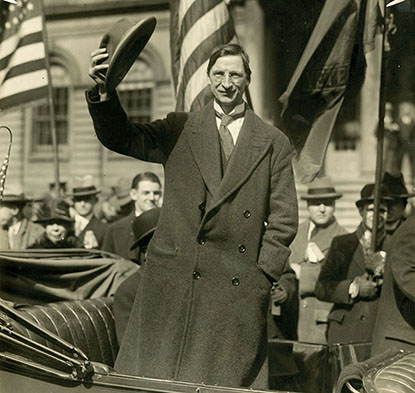
While the War of Independence raged in Ireland, a parallel international diplomatic campaign for recognition and funding for the underground Irish Republic was being waged. Central to this was the tour of Eamon de Valera, ‘President of the Irish Republic’, to the United States from June 1919 to December 1920. To assess its success or otherwise listen to Tommy Graham, editor of History Ireland, in discussion with Michael Doorley, Darragh Gannon, Miriam Nyhan Grey, and David McCullagh.
